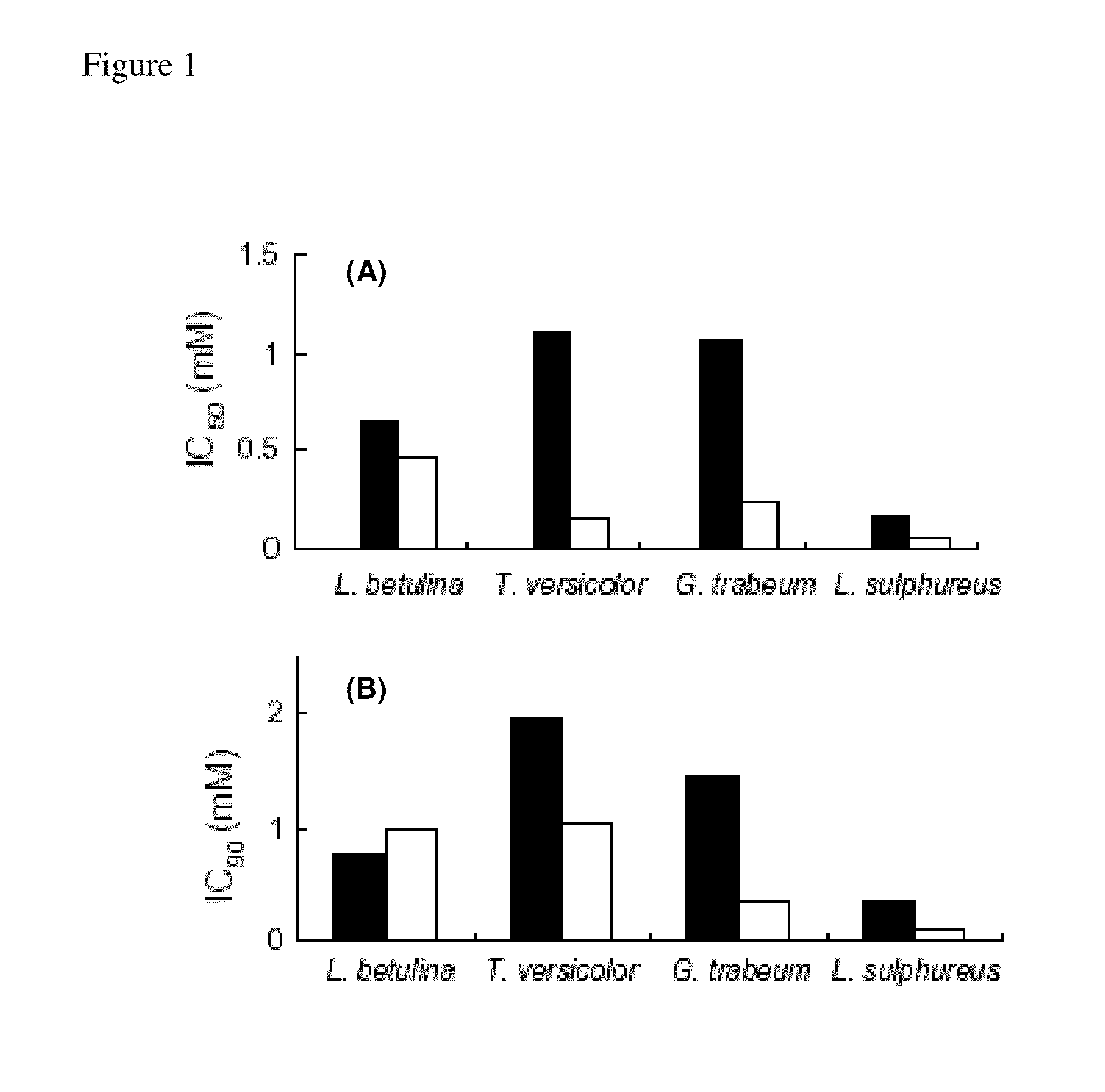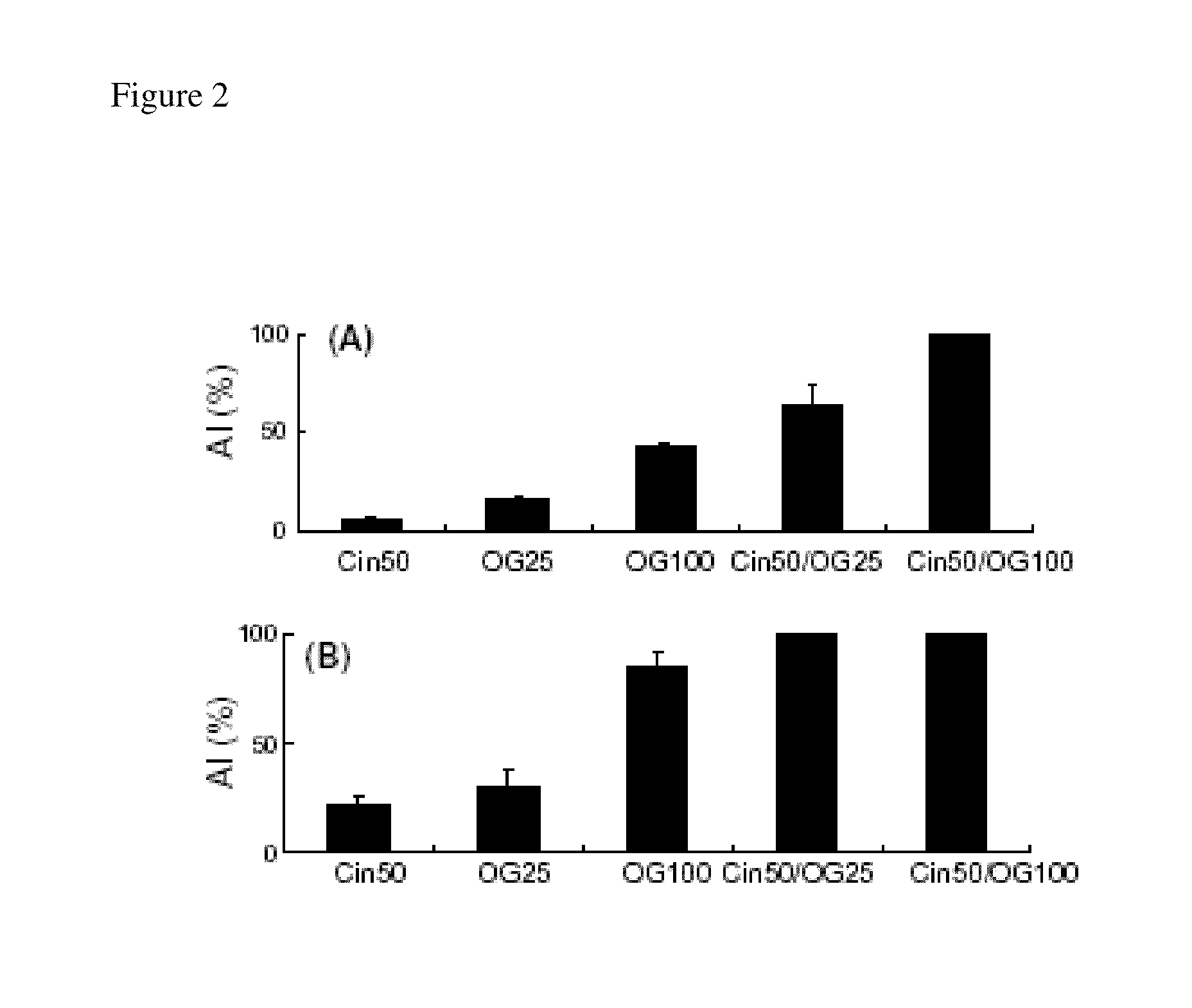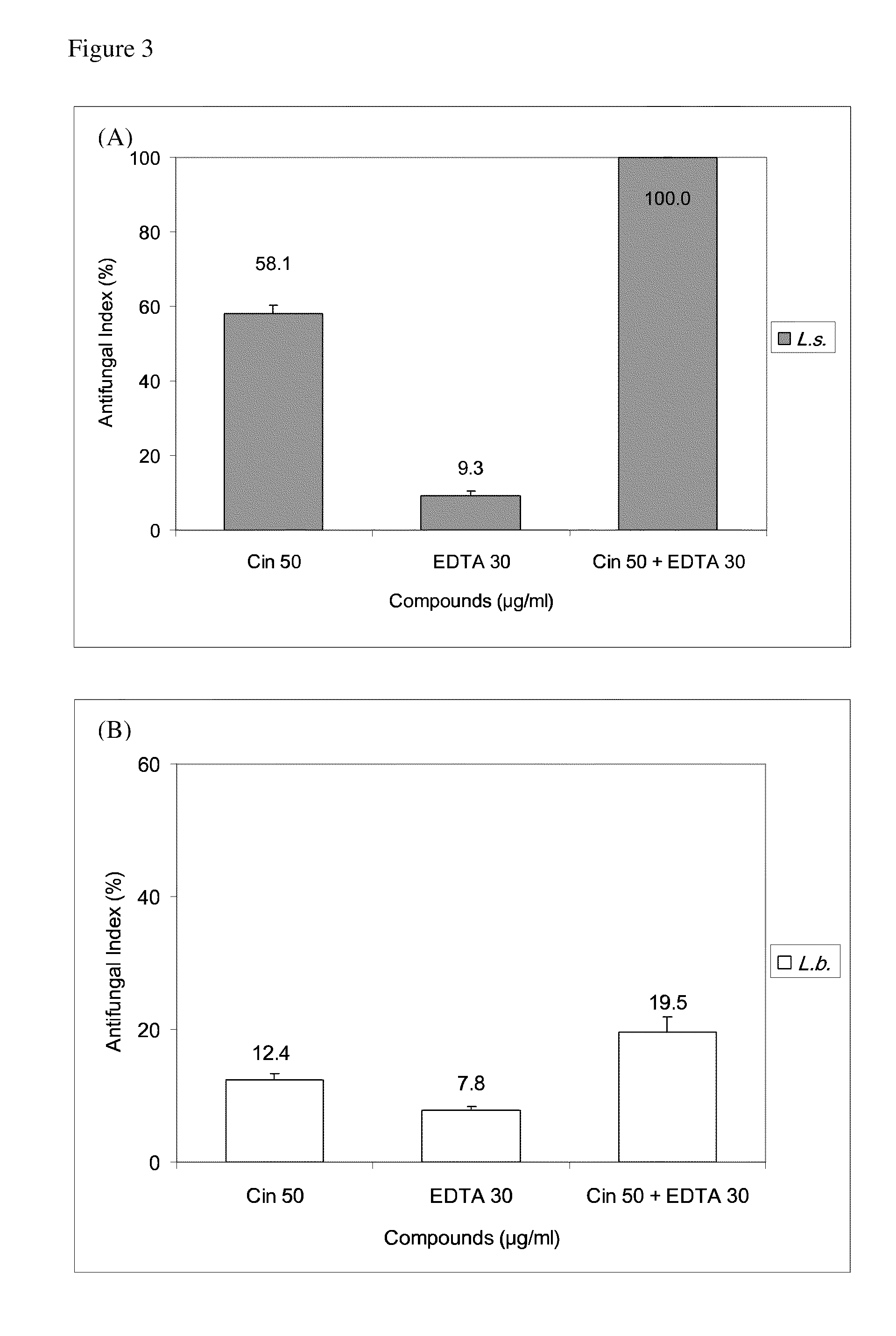Antifungal compositions for inhibiting growth of wood decay fungi and use thereof
a technology of antifungal compositions and compositions, which is applied in the field of antifungal compositions for inhibiting the growth of wood decay fungi, can solve the problems of large impact on economy and natural resource loss, the impact of our environment still comes along with its waste, and the most widely used preservatives cannot meet users' expectations
- Summary
- Abstract
- Description
- Claims
- Application Information
AI Technical Summary
Problems solved by technology
Method used
Image
Examples
example 1
Antifungal Activity of Antioxidants (Propyl Gallate, Octyl Gallate and Butylated Hydroxyltoluene) and Cinnamaldehyde
Fungal Strains
[0042]Fungal strains used were two white-rot fungi: Lenzites betulina (BCRC 35296) and Trametes versicolor (BCRC 35253) and two brown-rot fungi: Laetiporus sulphureus (BCRC 35305) and Gloeophyllum trabeum (BCRC 31614).
Chemicals
[0043]Propyl gallate and octyl gallate were purchased from Tokyo Kasei Kogyo Co. (Japan). Butylated hydroxyltoluene (BHT) and 1-diphenyl-2-picrylhydrazyl (DPPH) were purchased from Sigma Chemical Co. (America). Cinnamaldehyde was purchased from ACROS (Belgium). Commercial fungicide propiconazole was used as a positive control.
Media Preparation and Growth Condition
[0044]Potato dextrose agar (PDA) was mixed with distilled water at a concentration of 39 g / l and then autoclaved. Various chemicals such as propiconazole, propyl gallate, octyl gallate and cinnamaldehyde were dissolved in ethanol before adding into autoclaved PDA media.
[004...
example 2
Antifungal Activity of Octyl Gallate Alone
[0049]The strains used in this experiment include soft rot fungi [Chaetomium globosum (BCRC31605)], Cu tolerant rot fungi [Wolfiporia extensa (BCRC36022), Poria placenta (BCRC36412)], brown rot fungi [Laetiporus sulphureus (BCRC35305), Gloeophyllum trabeum (BCRC31614), Fomitopsis pinicola (BCRC35303), Antrodia taxa] and white rot fungi [Lenzites betulina (BCRC35296), Trametes versicolor (BCRC35253), Schizophyllum commune (BCRC35258)].
[0050]The antifungal index (AI %) and median inhibition concentration (IC50) were measured as described before.
[0051]As shown of AI values in Table 2 and IC50 values in Table 3, at the concentration of 100 μg / ml, octyl gallate could inhibit the growth of C. globosum and A. taxa completely, while showing 75˜96% inhibition against W. extensa, P. placenta, L. sulphureus, G. trabeum and F. pinicola. Octyl gallate also showed 41˜69% inhibition ability against L. betulina, T. versicolor and S. commune at the concentra...
example 3
Synergistic Antifungal Effects of the Combination of Octyl Gallate with Cinnamaldehyde
[0052]Antioxidants combined with cinnamaldehyde were studied to determine whether the combination has enhanced actions against wood decay fungi. The antifungal index (AI %) was calculated as described above. As shown in FIG. 2, the tested fungi were L. betulina (A) and G. trabeum (B). Octyl gallate (OG) and / or cinnamaldehyde (Cin) were used to treat wood decay fungi in various combinations. Cin50 indicated the concentration of cinnamaldehyde was 50 μg / ml, and OG25 indicated the concentration of octyl gallate was 25 μg / ml.
[0053]The antifungal index of cinnamaldehyde against L. betulina at the concentration of 50 μg / ml was 6% and that of octyl gallate against L. betulina at the concentration of 25 and 100 μg / ml was 16% and 42%, respectively. The antifungal index for the treatment using the combination of cinnamaldehyde with octyl gallate was greatly increased to 64% and 100%, respectively, indicating...
PUM
| Property | Measurement | Unit |
|---|---|---|
| concentration | aaaaa | aaaaa |
| concentration | aaaaa | aaaaa |
| concentration | aaaaa | aaaaa |
Abstract
Description
Claims
Application Information
 Login to View More
Login to View More - R&D Engineer
- R&D Manager
- IP Professional
- Industry Leading Data Capabilities
- Powerful AI technology
- Patent DNA Extraction
Browse by: Latest US Patents, China's latest patents, Technical Efficacy Thesaurus, Application Domain, Technology Topic, Popular Technical Reports.
© 2024 PatSnap. All rights reserved.Legal|Privacy policy|Modern Slavery Act Transparency Statement|Sitemap|About US| Contact US: help@patsnap.com










